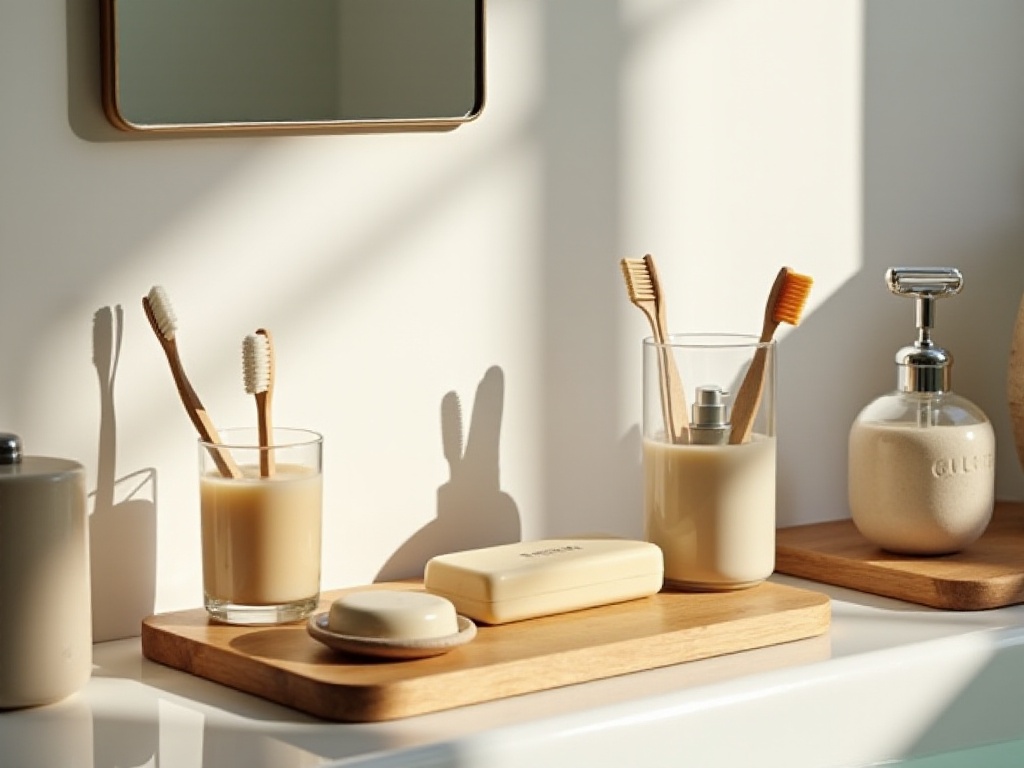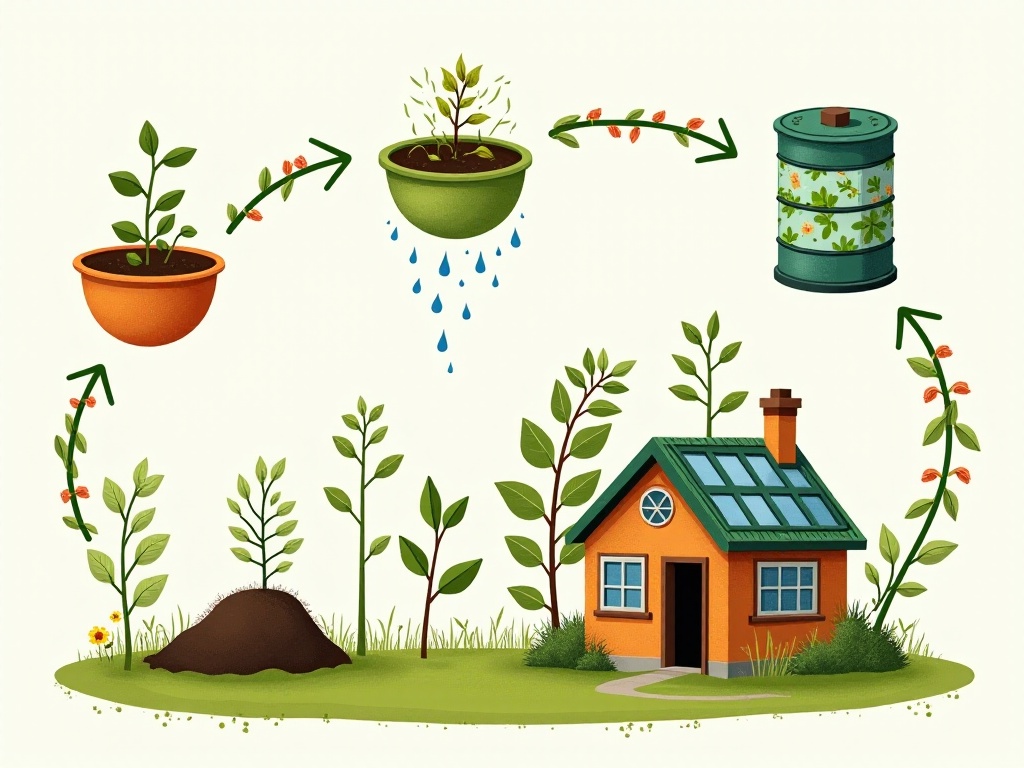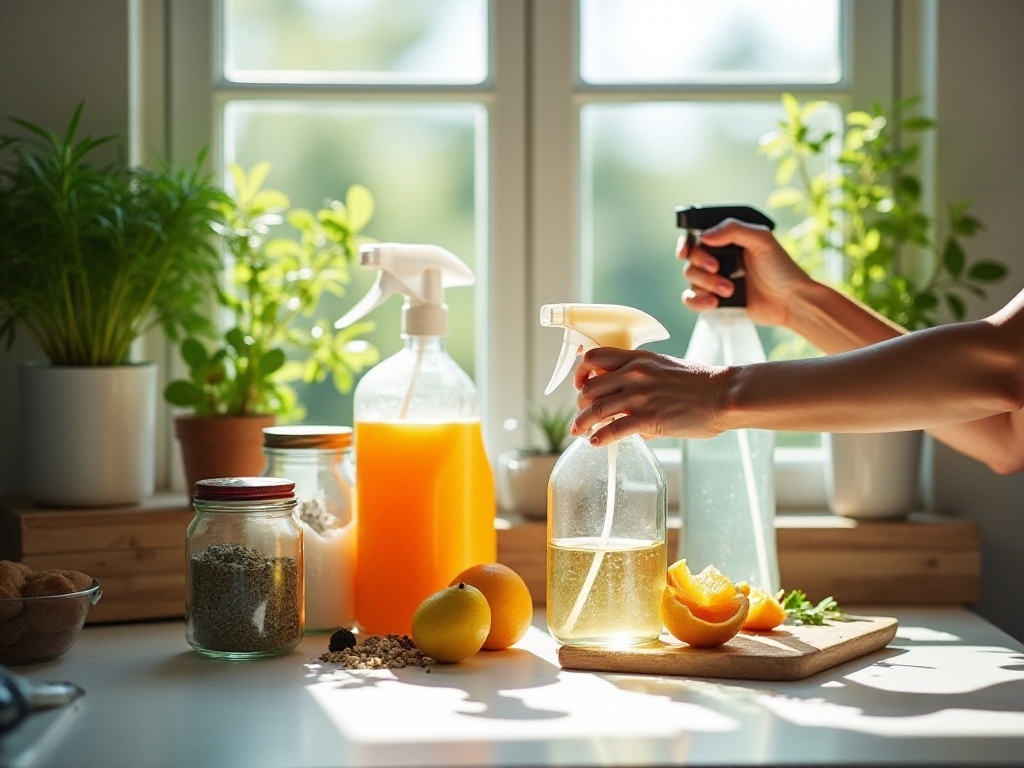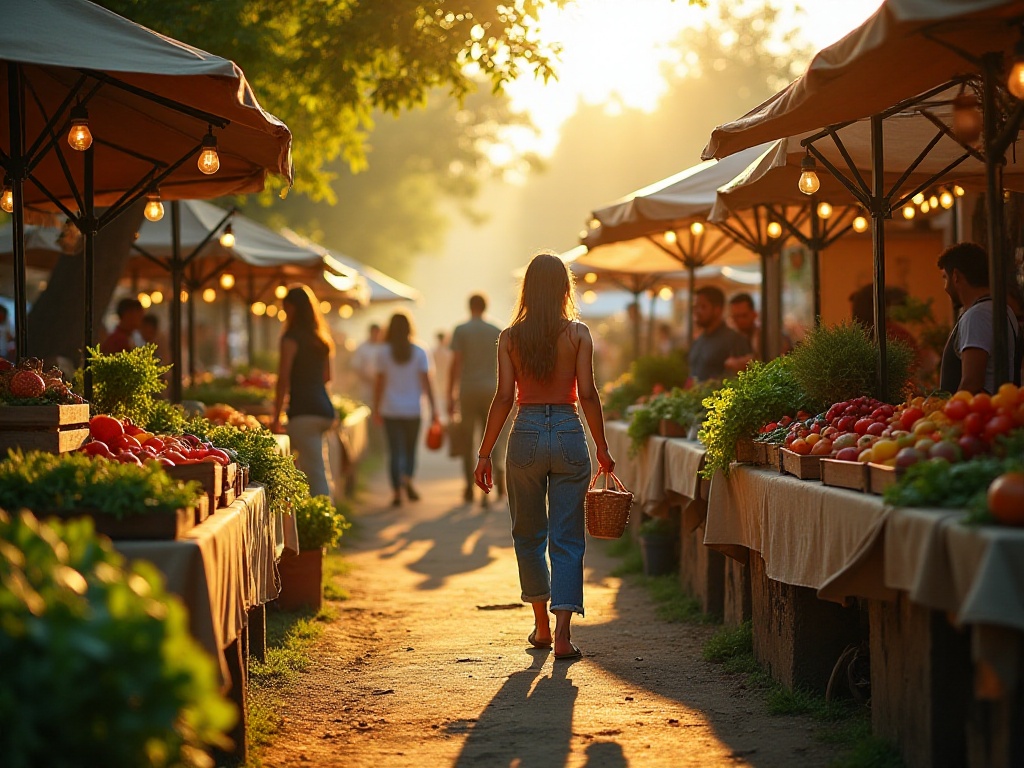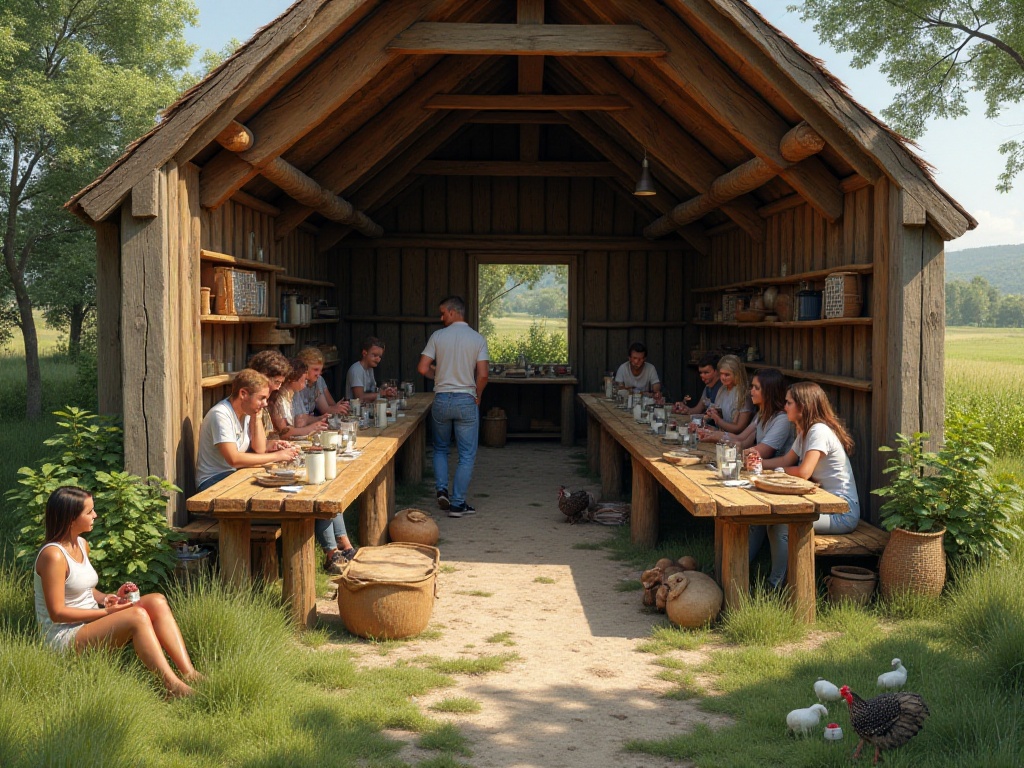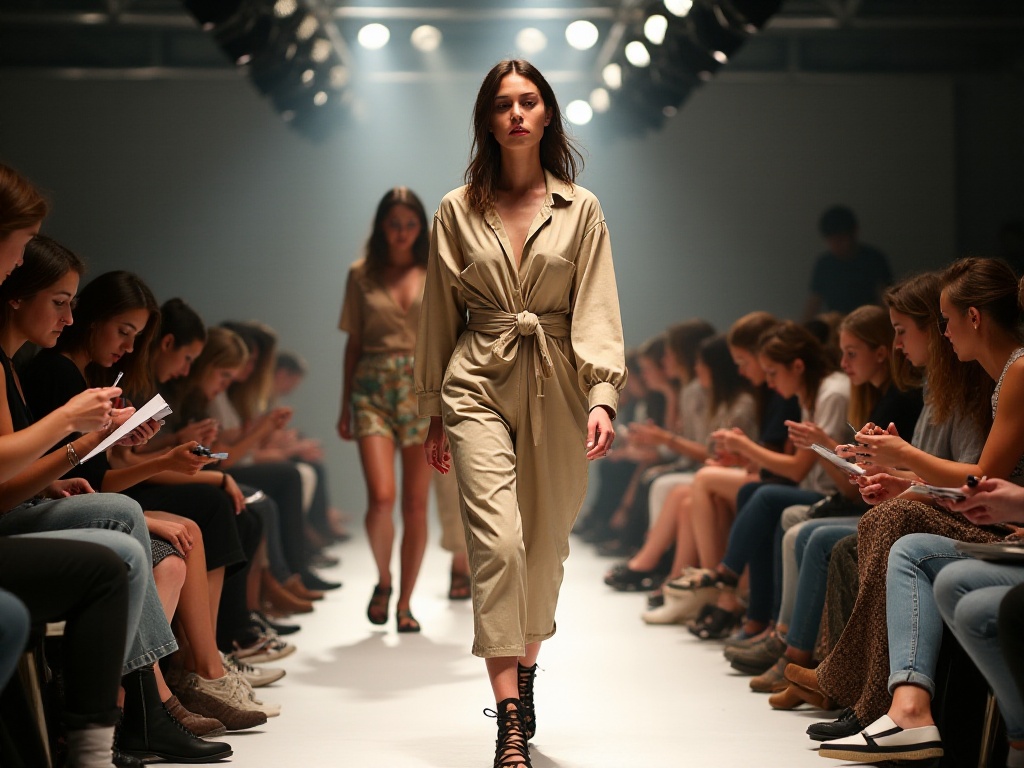Before Starting
As someone born after 1995, I always thought zero-waste living was something only lifestyle bloggers did, completely disconnected from young people like me living fast-paced lives. Then last month, I had a sudden idea to conduct a small experiment - tracking all the waste I produced in a week. The results shocked me!
The milk tea cups casually tossed when getting home, plastic takeout containers, online shopping boxes, snack wrappers - my trash bin was overflowing. In just one week, I produced two large bags of garbage! This made me reflect: Is this really the lifestyle I want?
So I decided to make a change and try zero-waste living. To be honest, I worried it would be too troublesome and affect my quality of life. But after a month of practice, I realized I had overthought it. Not only did I reduce waste by 80%, but my life actually became more refined.
Understanding the Current Situation
As a guy with a science and engineering background, I believed that change needed to be supported by data. So I took out Excel and carefully recorded everything I threw away for a week. Every evening while sorting trash, I would categorize and record the quantity and weight of each type of waste.
The statistics shocked me: in one week I used 12 takeout containers, 8 milk tea cups, and countless plastic bags. Adding various snack packaging and delivery boxes, I produced nearly 15 kg of waste! These numbers made me realize how environmentally unfriendly my habits were.
Through this tracking, I found my waste mainly came from three areas: takeout food and beverages, online shopping packaging, and daily necessities. Knowing the key issues gave direction to the changes ahead.
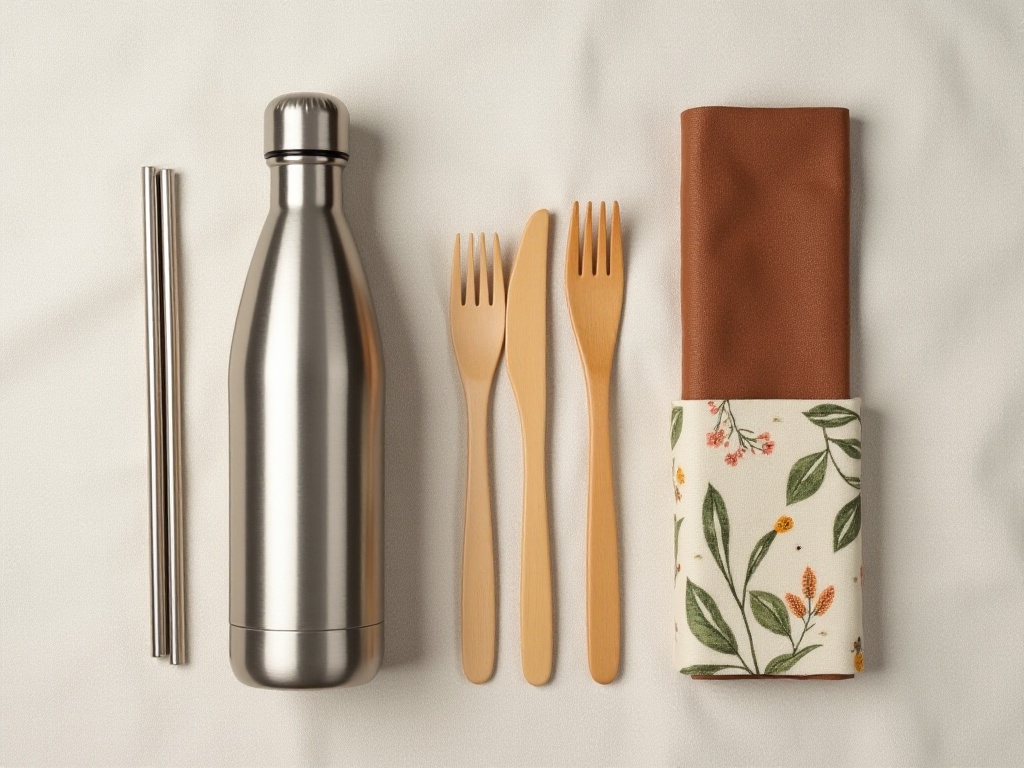
Starting Small
The term "zero-waste" might sound intimidating, but it can be broken down into many small goals. Just like watching TV series one episode at a time doesn't feel overwhelming, the same applies to zero-waste living.
My first step was buying a stylish thermos. I used to think carrying water was troublesome, but after using the thermos, I discovered it not only saved money but allowed me to drink water at the perfect temperature anytime. I chose my favorite mint green color, which was very soothing and made me feel confident walking around.
Next, I bought several aesthetically pleasing canvas bags online. No more asking for plastic bags when grocery shopping or shopping. The patterns on the canvas bags were carefully selected by me, and people often ask where I bought them - instantly transforming me from an eco-warrior to a fashion icon!
After adapting to these changes, I got myself a lunch box. I used to think bringing lunch was too troublesome, but after using an attractive glass lunch box, I realized bringing lunch could be elegant. Opening my lunch box during break time, the aroma of food paired with beautiful utensils felt much more satisfying than randomly grabbing takeout downstairs from the office.
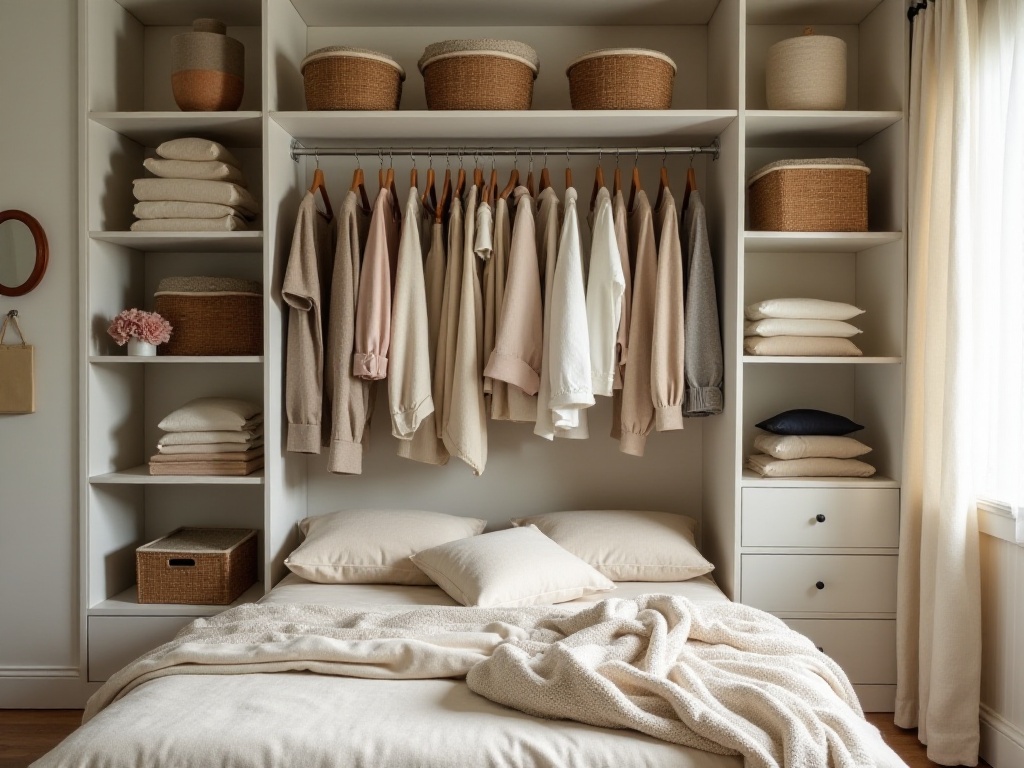
Kitchen Transformation
As a cooking novice, I discovered the kitchen was a major waste producer. But after this transformation, my kitchen not only became more environmentally friendly but unexpectedly gained an Instagram-worthy vibe.
First came changes in storage methods. I switched to buying bulk groceries and stored them in transparent glass jars. These uniform-sized jars arranged neatly on shelves looked very satisfying. Seasonings were stored in small glass bottles, labeled and arranged on spice racks - just like a food blogger's setup!
Shopping for groceries also got a new twist. I bought several cute mesh bags on Taobao, some printed with carrots, others with cabbage. Different vegetables got different bags, making it both eco-friendly and easy to organize. The market vendors said I was a creative young person, haha.
For food preservation, I did thorough research. Lightly spraying leafy vegetables like lettuce and chives with water, then wrapping them in cling film and storing them in containers kept them fresh for a week. Fruits also had their tricks - like removing spoiled strawberries before storage and keeping apples separate from bananas. These small techniques I discovered bit by bit.
What I'm most proud of is my new method for handling leftovers. Previously, I'd throw away leftovers thinking they weren't fresh, but now I find creative ways to use them. For example, leftover stir-fried vegetables can be chopped and used as dumpling filling the next day, and leftover rice can become fried rice, reducing waste while adding variety to meals.
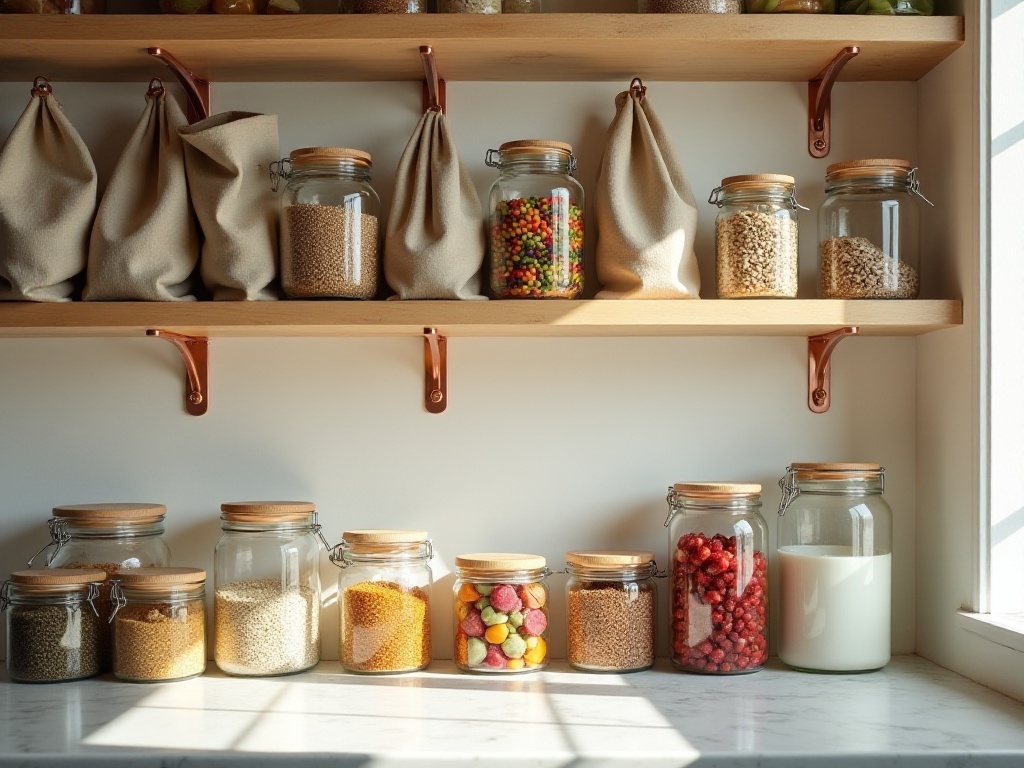
New Cleaning Solutions
Previously, my bathroom and kitchen were filled with various bottles of cleaning products, but now I've replaced them all with homemade eco-friendly cleaners. Honestly, I was initially worried that homemade cleaners wouldn't work well enough, but it turned out I was overthinking it.
Baking soda is truly magical! It can be used for scrubbing pots and cleaning sinks and toilets. I discovered that mixing baking soda with white vinegar into a paste easily removes limescale from tiles. Best of all, these natural cleaners don't produce harsh chemical odors, making them feel much safer to use.
Regarding personal care products, solid toiletries were my biggest surprise. When I first started using solid shampoo bars, I felt they weren't slippery enough. But after using them for a while, I found my hair actually became more lustrous. I also tried handmade soap, which produces rich lather and doesn't dry out my skin.
I especially want to share my experience with menstrual cups. To be honest, I was nervous the first time I used one, worried about hygiene. But after actually using it, I realized menstrual cups are not only more hygienic but also very convenient. No worries about leakage at night, and you can exercise comfortably. Although there's an initial learning curve, it's definitely worth trying.
Smart Shopping Methods
I used to be a shopping addict, but now I've set new shopping principles. Whenever I want to buy something, I ask myself three questions: Do I really need this? Do I have something similar? Is this worth the money?
Especially for clothes, I now follow a "one in, one out" rule. When I want to buy new clothes, I must first remove one old piece from my closet. This not only controls the quantity of clothing but forces me to think about the necessity of each purchase.
I also discovered that second-hand trading platforms are absolute treasures. Once when I wanted to buy a coffee machine, I found one on Xianyu that was 90% new for just one-third of the original price. After cleaning and disinfecting, it was just like new - both eco-friendly and economical.
I have new strategies for grocery shopping too. I write shopping lists in advance to avoid being tempted by promotions to buy unnecessary items. When buying fruits and vegetables, I specifically choose those that are imperfectly shaped but still good quality, as these are often rejected by others and end up as waste.
Sometimes when I see beautifully packaged imported fruits in the supermarket, I remind myself: Is it really necessary to buy fruit with thick plastic packaging? Local seasonal fruits are actually fresher and more environmentally friendly.
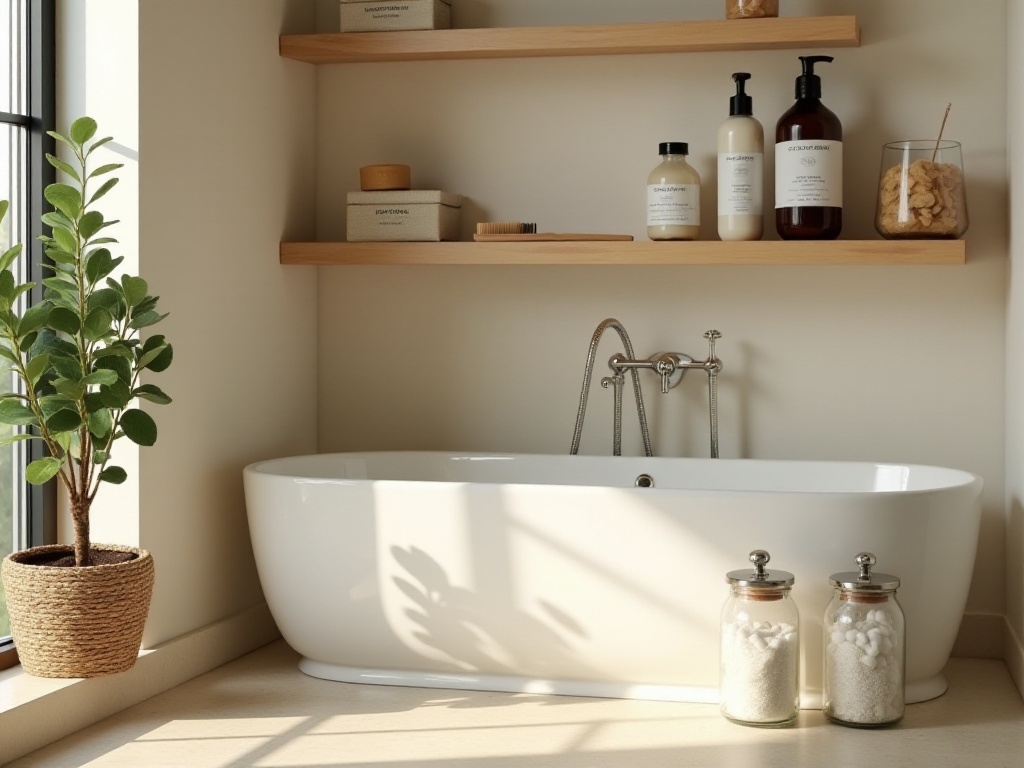
Reuse and Recycle
During this "reuse" process, I found my creativity was fully activated. Things I used to throw away carelessly have become great materials for transformation.
Old T-shirts are a good example. T-shirts with outdated patterns can be cut into strips to weave storage baskets. Jeans with holes can have their legs cut off, with the upper part becoming storage bags. Even socks with small holes aren't immediately thrown away - paired with cute patches, they become more interesting.
Glass jars at home are especially precious. Jars from finished sauces can be cleaned and used to store snacks and dry goods. Some beautiful jam jars can become cozy candle holders with the addition of candles. I've even transformed some small jars into succulent planters, creating a lovely display on the windowsill.
What I'm most proud of is starting composting on the balcony. I use a large plastic box as a compost bin with small holes drilled in the bottom. Every day I add fruit peels and vegetable leaves, along with a layer of dead leaves or newspaper, and it actually turns into fertilizer! The pothos plants grown with this fertilizer are thriving - friends say my balcony looks like a small garden.
Sharing Results
One month of zero-waste living brought changes far beyond waste reduction. Previously, I had to empty my trash bin every two days; now it's every two weeks. The composition of waste has also changed, from mostly packaging waste to mainly unavoidable life waste.
My view on consumption has changed significantly during this process. I used to think buying new and expensive items was better, but now I focus more on practicality and environmental friendliness. Although initially investing in reusable items required some money, in the long run, my living costs have actually decreased.
The most unexpected gain was meeting like-minded friends through this lifestyle. On second-hand trading platforms and in environmental protection communities, people share experiences and encourage each other. Pursuing an eco-friendly life can be this interesting and fashionable.
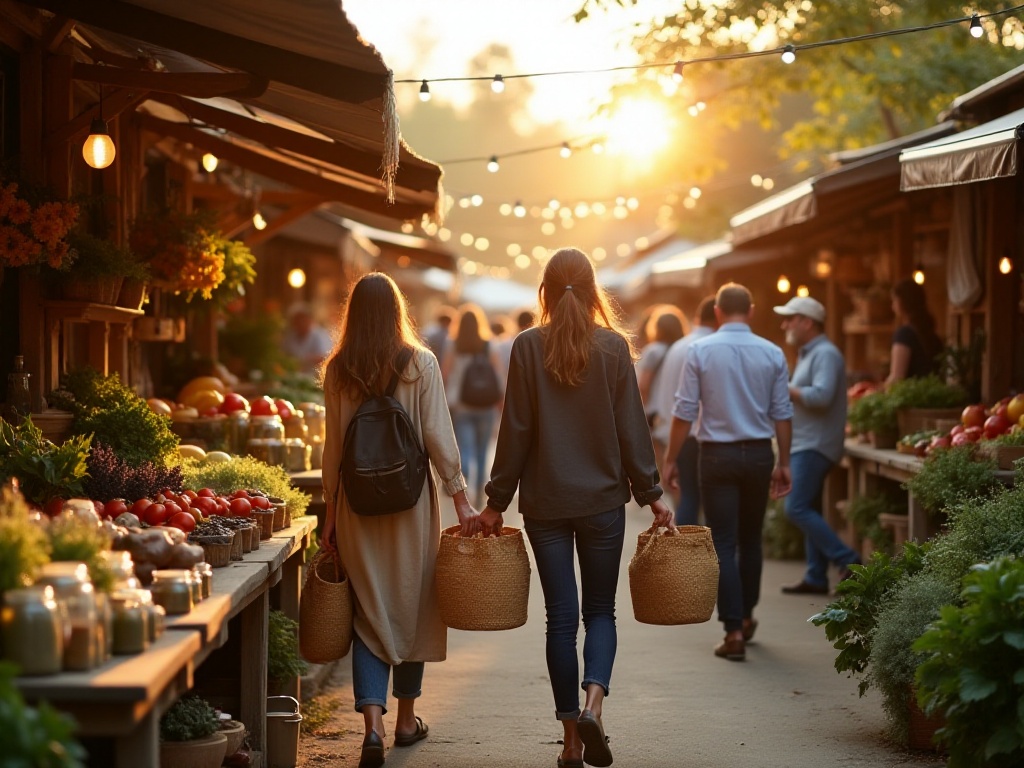
New Thoughts
Through this month of practice, I deeply realized that zero-waste living isn't just an individual choice but requires participation and support from the whole society.
For example, if more businesses could support bringing your own containers, or supermarkets could increase their bulk product options, practicing zero-waste would be much easier. Some coffee shops now offer discounts to customers who bring their own cups, which is a great initiative.
I also discovered that many young people actually have environmental awareness but lack specific action guidelines. If there were more sharing and communication platforms showing the possibilities and beauty of zero-waste living, more people would likely join this movement.
Ultimately, environmental protection isn't a one-person effort but requires everyone's participation. Like ants moving house, if everyone makes small changes, these accumulate to make our Earth more beautiful.
Do you want to join the zero-waste living movement? Why not start with one small change, perhaps carrying a thermos or bringing your own shopping bags? Take it slow, start with simple things, and you can definitely succeed.
I look forward to seeing your stories and experiences in the comments. If you're also practicing zero-waste living, welcome to share your insights with everyone. Let's work together for environmental protection!


